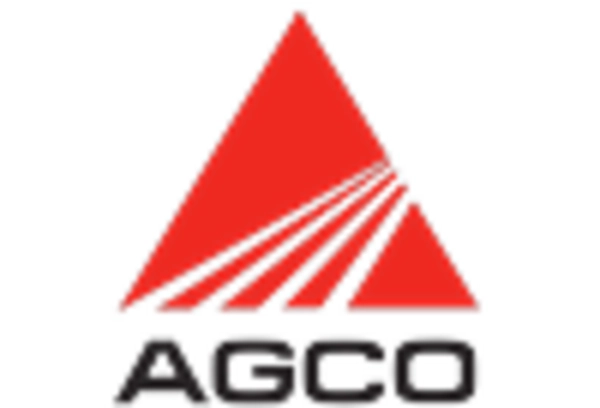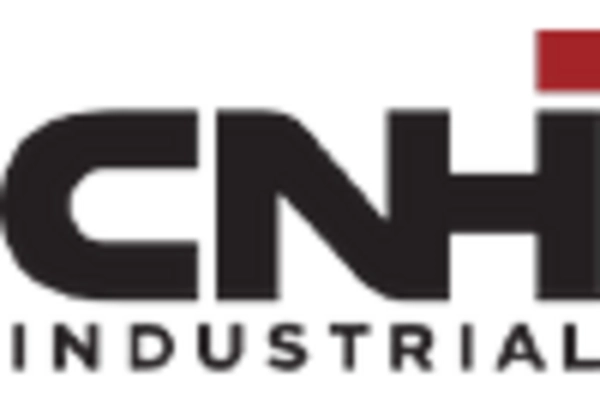Focus on Crop Diversification
The farm implements market is also being shaped by the trend of crop diversification among farmers. As agricultural practices evolve, farmers are increasingly adopting varied cropping systems to enhance resilience against market fluctuations and climate change. This diversification necessitates specialized implements tailored for different crops, thereby creating opportunities for manufacturers to innovate and expand their product lines. Market data indicates that the demand for specialized farm implements is projected to grow by 10% annually, reflecting the changing dynamics of the agricultural landscape and the need for adaptable solutions in the farm implements market.
Government Support and Subsidies
Government initiatives play a crucial role in shaping the farm implements market. Various federal and state programs provide financial assistance and subsidies to farmers for the purchase of modern equipment. This support is aimed at promoting agricultural efficiency and sustainability. For instance, the USDA has allocated over $1 billion in grants and loans to enhance farm productivity through the acquisition of advanced implements. Such financial incentives not only stimulate demand but also encourage farmers to invest in innovative technologies, thereby driving growth in the farm implements market.
Emergence of Smart Farming Solutions
The emergence of smart farming solutions is transforming the farm implements market. With advancements in technology, farmers are now able to utilize data analytics, machine learning, and automation to optimize their operations. Smart farming tools, such as drones and automated tractors, are gaining traction as they offer enhanced efficiency and productivity. The market for smart farming solutions is expected to reach $10 billion by 2027, indicating a robust growth trajectory. This trend suggests that the farm implements market will increasingly incorporate smart technologies, catering to the evolving needs of modern agriculture.
Increasing Labor Costs and Shortages
The farm implements market is significantly influenced by the rising labor costs and shortages faced by the agricultural sector. As labor becomes increasingly expensive and difficult to source, farmers are turning to mechanization as a viable solution. This shift towards automation is evident in the growing sales of tractors and other mechanized implements. Market analysis suggests that the demand for automated farm equipment is expected to rise by approximately 15% over the next five years. Consequently, this trend is likely to propel the farm implements market as farmers seek to optimize their operations and reduce reliance on manual labor.
Rising Demand for Precision Agriculture
The farm implements market is experiencing a notable shift towards precision agriculture, driven by the increasing need for efficiency and productivity in farming operations. Farmers are increasingly adopting advanced technologies such as GPS and IoT devices, which enhance the accuracy of planting, fertilization, and harvesting processes. This trend is reflected in the market data, indicating that the precision agriculture segment is projected to grow at a CAGR of approximately 12% from 2025 to 2030. As a result, manufacturers of farm implements are focusing on integrating these technologies into their products, thereby enhancing their appeal in the competitive landscape of the farm implements market.

















Leave a Comment